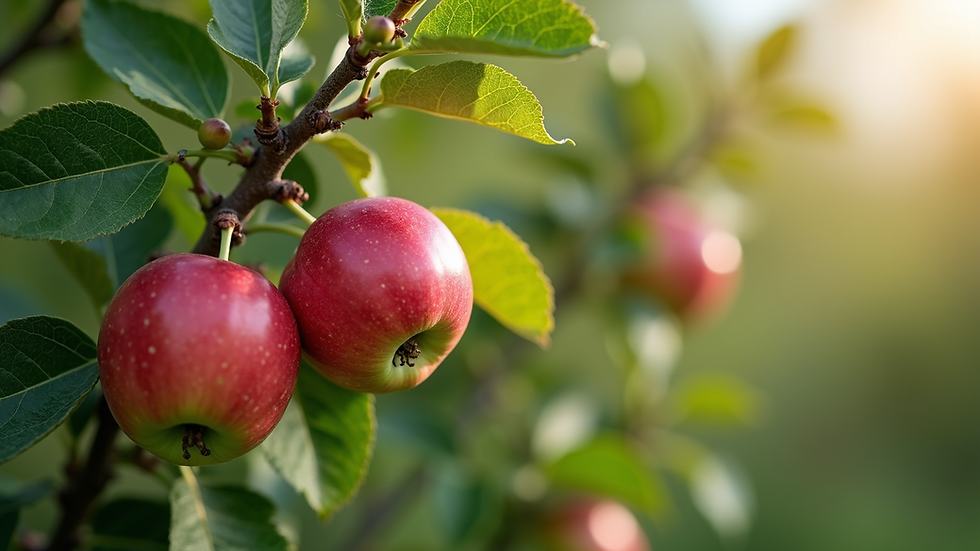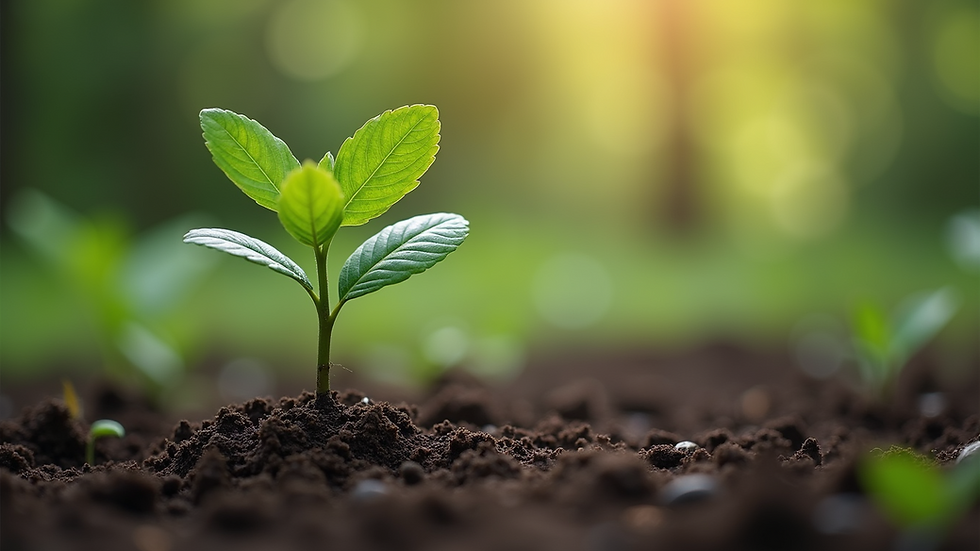Optimizing Tree Farming: Eco-Friendly Practices and Benefits
- Bob Brooks Jr
- Aug 14
- 5 min read
Tree farming is more than just planting trees. It is a sustainable practice that can benefit the environment, economy, and communities. As the world faces climate change and deforestation, optimizing tree farming becomes crucial. This blog post will explore eco-friendly practices in tree farming and the benefits they bring.
Tree farming can help combat climate change by absorbing carbon dioxide. Trees act as natural air filters, improving air quality. They also provide habitats for wildlife and contribute to biodiversity. By adopting eco-friendly practices, tree farmers can enhance these benefits while ensuring their operations are sustainable.
In this post, we will discuss various eco-friendly practices, their benefits, and how they can be implemented effectively.
Understanding Eco-Friendly Tree Farming
Eco-friendly tree farming focuses on sustainable practices that protect the environment. This approach minimizes negative impacts while maximizing benefits. Here are some key principles of eco-friendly tree farming:
Sustainable Land Use: This involves using land in a way that maintains its productivity over time. It includes practices like crop rotation and agroforestry.
Biodiversity Conservation: Maintaining a variety of tree species helps create a balanced ecosystem. This diversity can protect against pests and diseases.
Soil Health: Healthy soil is vital for tree growth. Practices like cover cropping and reduced tillage can improve soil quality.
Water Management: Efficient water use is essential. Techniques like drip irrigation can help conserve water while ensuring trees receive adequate moisture.
By following these principles, tree farmers can create a more sustainable and productive farming system.
Benefits of Eco-Friendly Practices
Adopting eco-friendly practices in tree farming offers numerous benefits. Here are some of the most significant advantages:
Environmental Benefits
Carbon Sequestration: Trees absorb carbon dioxide, helping to mitigate climate change. A well-managed tree farm can sequester significant amounts of carbon.
Improved Air Quality: Trees filter pollutants from the air, leading to cleaner and healthier environments for communities.
Biodiversity Support: Diverse tree species provide habitats for various wildlife, promoting ecological balance.
Soil Erosion Prevention: Tree roots help hold soil in place, reducing erosion and maintaining soil health.
Economic Benefits
Increased Yield: Sustainable practices can lead to healthier trees and higher yields over time.
Market Opportunities: Eco-friendly products often attract premium prices. Consumers are increasingly looking for sustainable options.
Cost Savings: Practices like reduced chemical use can lower input costs for farmers.
Social Benefits
Community Engagement: Eco-friendly tree farming can foster community involvement and education about sustainability.
Job Creation: Sustainable practices can create jobs in tree farming and related industries.
Healthier Communities: Improved air and water quality contribute to better health outcomes for local populations.
Eco-Friendly Practices to Implement
Now that we understand the benefits, let’s explore specific eco-friendly practices that tree farmers can implement.
1. Agroforestry
Agroforestry combines agriculture and forestry. This practice involves planting trees alongside crops or livestock. It offers several advantages:
Increased Biodiversity: Mixing trees with crops can enhance biodiversity.
Soil Improvement: Tree roots can improve soil structure and fertility.
Microclimate Regulation: Trees provide shade and reduce temperature extremes, benefiting crops.
2. Organic Farming
Organic farming avoids synthetic chemicals. Instead, it uses natural methods to manage pests and diseases. Here are some key components:
Natural Fertilizers: Compost and manure can enrich soil without harmful chemicals.
Crop Rotation: Rotating crops helps prevent soil depletion and pest buildup.
Integrated Pest Management: This approach uses natural predators and other methods to control pests.
3. Water Conservation Techniques
Water is a precious resource. Implementing water conservation techniques can help tree farmers use water more efficiently:
Drip Irrigation: This method delivers water directly to the roots, reducing waste.
Rainwater Harvesting: Collecting rainwater can provide an additional water source for irrigation.
Mulching: Applying mulch around trees helps retain moisture in the soil.
4. Sustainable Harvesting Practices
Sustainable harvesting ensures that tree farming remains viable for the long term. Here are some practices to consider:
Selective Logging: Instead of clear-cutting, selectively harvest mature trees. This approach maintains forest structure and health.
Replanting: Always replant trees after harvesting to ensure continuous growth and carbon sequestration.
Monitoring Growth: Regularly assess tree health and growth to make informed decisions about harvesting.
5. Community Involvement and Education
Engaging the community is vital for successful tree farming. Here are ways to involve local communities:
Workshops and Training: Offer workshops on sustainable practices to educate farmers and community members.
Partnerships: Collaborate with local organizations to promote tree farming and sustainability.
Volunteer Programs: Create opportunities for community members to participate in tree planting and maintenance.
Case Studies of Successful Eco-Friendly Tree Farming
To illustrate the effectiveness of eco-friendly practices, let’s look at a few case studies.
Case Study 1: The Green Tree Initiative
In the Pacific Northwest, a group of tree farmers formed the Green Tree Initiative. They adopted agroforestry practices, planting trees alongside berry crops. This approach increased biodiversity and improved soil health. As a result, farmers reported higher yields and better pest control.
Case Study 2: Organic Tree Farming in California
A tree farm in California transitioned to organic practices. They stopped using synthetic fertilizers and pesticides. Instead, they focused on natural methods like composting and crop rotation. The farm saw a significant increase in soil health and tree vitality. They also attracted customers willing to pay more for organic products.
Case Study 3: Water Conservation in Florida
In Florida, a tree farm implemented drip irrigation and rainwater harvesting. These practices reduced water usage by 30%. The farm maintained healthy trees while conserving a vital resource. This approach not only benefited the environment but also saved the farmer money.
The Future of Tree Farming
The future of tree farming looks promising. As awareness of environmental issues grows, more farmers are adopting eco-friendly practices. Innovations in technology and sustainable methods will continue to shape the industry.
Farmers can leverage new tools and techniques to optimize their operations. For example, precision agriculture uses data to improve decision-making. This approach can enhance efficiency and sustainability.
Additionally, consumer demand for sustainable products will drive change. As more people seek eco-friendly options, tree farmers who adopt sustainable practices will have a competitive edge.
Embracing Eco-Friendly Tree Farming
Optimizing tree farming through eco-friendly practices is not just beneficial; it is essential. By adopting sustainable methods, tree farmers can contribute to a healthier planet while ensuring their livelihoods.
The benefits of eco-friendly tree farming are clear. From environmental improvements to economic gains, the advantages are significant. By implementing practices like agroforestry, organic farming, and water conservation, farmers can create a sustainable future.
As we move forward, it is crucial for tree farmers to embrace these practices. Together, we can cultivate a greener world for generations to come.

By working together and sharing knowledge, we can optimize tree farming for a sustainable future. Let’s take action today for a greener tomorrow.


Comments